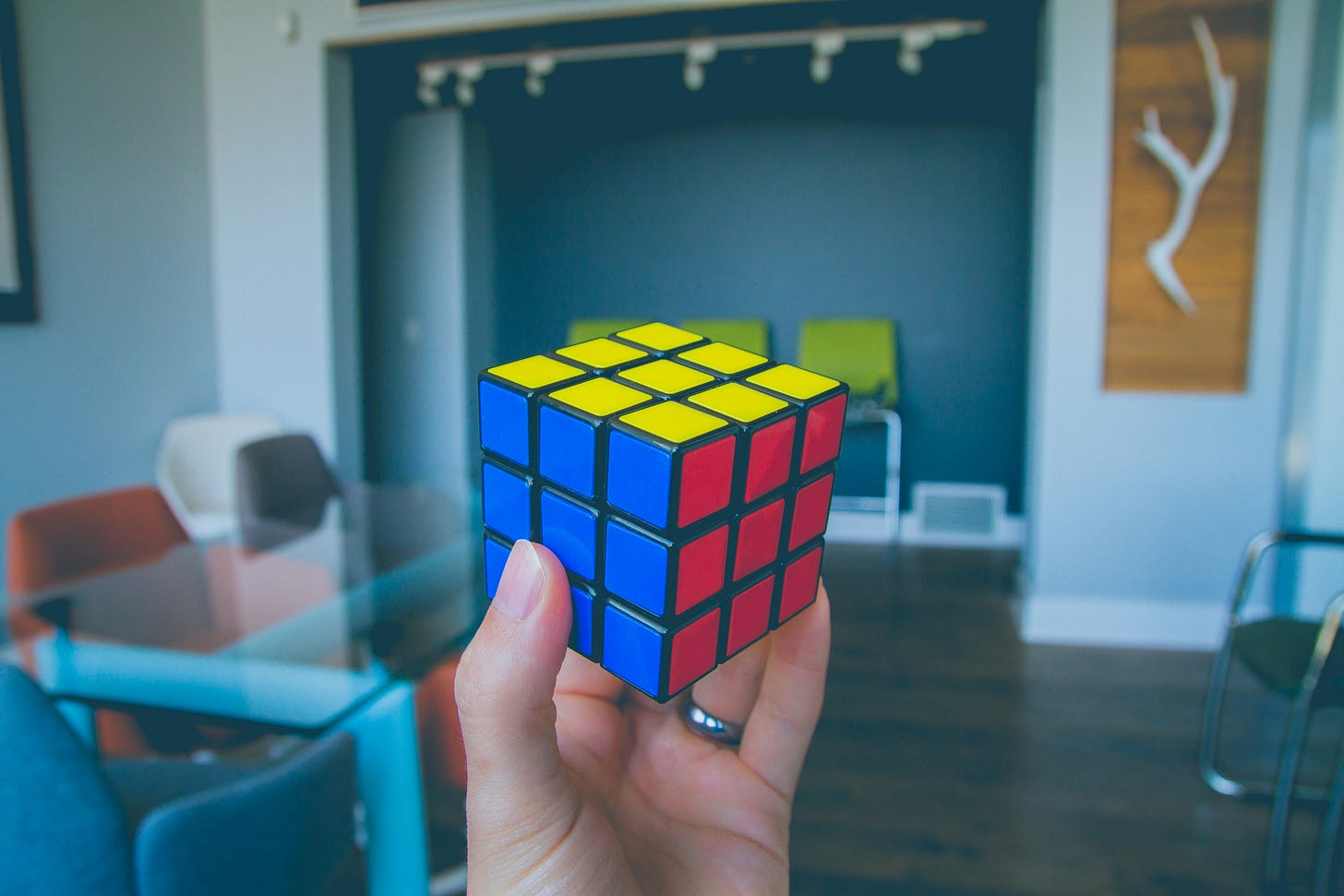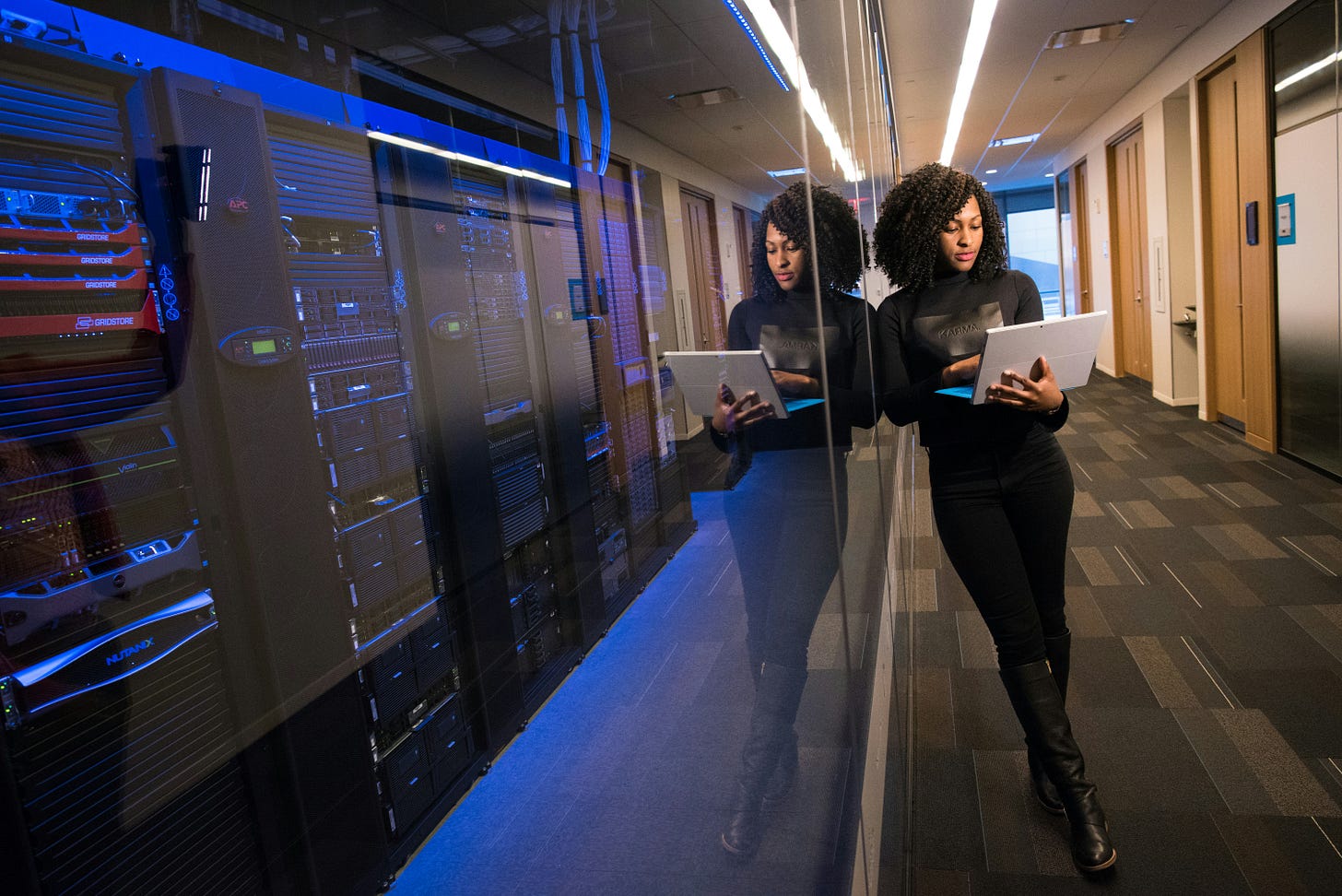The Persistence of Entropy
Have you ever wondered why we feel more tired, not energized, as the day goes by? Or why hot tea cools down and ice melts over time?
Need another example? Why is it harder to focus than to let your mind wander? Why does energy disperse more easily than it concentrates, so effortlessly that you don’t even need to do anything at all?
The answer lies in Entropy—the tendency for heat to spread outward, cooling your tea, melting ice, or scattering your focus from homework to notifications—or even just the possibility of receiving one.
Thermodynamics
Search “Entropy” online, and you'll find images like this:
This visual aligns with a fundamental principle of our universe: The Second Law of Thermodynamics, which states:
“Natural processes tend to lead to greater disorder, and the Universe tends toward a state of maximum Entropy.”
For many of my college peers, this law feels especially relatable. This unchanging rule dictates that energy will spread out if it has the chance; energy naturally wants to spread rather than stay concentrated. The concept of Entropy was first introduced by German physicist Rudolf Clausius in the mid-19th century as part of his work on thermodynamics, particularly the second law, which he formalized alongside Scottish physicist William Thomson (Lord Kelvin). Clausius coined "Entropy" from the Greek word trope, meaning "transformation" or "change," to describe the tendency for energy to disperse within a system.
Think of a hot cup of tea sitting next to an ice cube. Over time, they’ll swap heat back and forth until they reach the same, lukewarm temperature. The tea won’t get hotter, nor will the ice get colder. That’s because concentrated heat—like in the tea—is in a Low-Entropy state, while spread-out energy is a High-Entropy one. Energy naturally tends to even out between objects. The chance of heat balancing between the tea and the ice cube is far greater than the tea getting hotter or the ice getting colder. In fact, that scenario is so unlikely, it’s practically impossible.
Entropy in Different Lens
Now, imagine applying the concept of Entropy to life. The chances of something extraordinary happening on any given day are low unless we actively pursue it. As humans, we crave novelty and excitement, since repeated experiences quickly lead to boredom. In this sense, “boring” represents High Entropy, and “extraordinary” represents Low Entropy. Don’t do anything, and see how life naturally drifts toward high Entropy, rarely venturing into the extraordinary.
Humans, however, have a unique power: we can intentionally reverse Entropy. It falls on us to put effort into creating moments that counteract Entropy’s pull. Otherwise, disorder will increase, temperatures will plummet, and the universe will return to its default state—cold, dark, and inactive. Imagine it, if you will.
Though this example may seem dramatic, Entropy’s presence can be observed in even the smallest details of any system.
Our Sun
Now that I have your attention, let’s really talk about Entropy. Our sun, for instance, is a powerful and consistent source of Low-Entropy energy. Earth dissipates this energy into space, where it becomes High-Entropy, non-useful energy. If left unused, Low-Entropy energy will eventually disperse, becoming unavailable over time. So, it’s wise to use energy while it remains usable, before Entropy has the chance to increase.
Inaction, similarly, affects our bodies negatively more than intense activity does, presenting the importance of our need for purposeful action.
The Rubik’s Cube
Still with me? Great! Let’s explore Entropy from another angle.
Beyond its role as a measure of disorder, Entropy also measures uncertainty. Take a Solved Rubik’s Cube: it’s in a Low-Entropy state, with every color perfectly arranged. But as you twist and turn it, Entropy—and disorder—increase, creating an unpredictable state. To solve it, you’ll need more “right” moves than wrong ones, yet without knowing the correct moves in advance, progress takes time, and some moves may even set you back.
You might ask: well, if the issue is lack of information, can’t we just develop a plan of only the right moves so then we could just implement and all Cubes can be solved?
I’m glad you asked, because this brings us to another Interesting case study about Entropy. It argues that “Entropy is in the eye of the beholder”, which basically means that Entropy, or the increase of Entropy, is largely due to our inability to keep track of information. In simpler terms, when we lack information about something, we perceive it as chaotic and disordered. As things change over time—and since everything is in a constant state of change in our ever-changing world—we end up with less information, gradually losing track. This also explains the challenge of the Rubik’s Cube problem.
The study also suggests that decreasing the Entropy of an agent (a person, the observer) over time is possible. This can be achieved by expanding awareness, increasing consciousness, and gaining information about the system.
Entropy in Technology and Management
In society, Entropy reveals itself in another way: the continuous need to organize information, resources, and systems. Just as heat energy naturally disperses, so do ideas, plans, and efforts if left unchecked. This is why companies invest in information systems and software to prevent organizational Entropy—our technological response to keep information concentrated and useful.
Even AI and machine learning fight a battle against Entropy. Algorithms are designed to reduce uncertainty, scanning large amounts of data to detect patterns and extract meaningful insights. In a way, technology is our most efficient ally in preserving “Low-Entropy” order in an otherwise chaotic, data-driven world.
On a personal level, consider how we use calendars, planners, and task management apps. These tools reverse the natural pull toward distraction by keeping our focus “concentrated.” Each method, whether it’s organizing data, planning our time, or managing resources, stands as our defense against Entropy.
Entropy and the Human Mind
We can also observe Entropy in our mental processes. Thoughts naturally wander, memories fade, and focus disperses, reflecting the mind’s tendency toward Entropy. Structured thinking exercises work to concentrate and “order” our mental energy, just as we organize our physical world.
Interestingly, the more information we have, the harder it becomes to maintain order without conscious effort. The mind can feel “scattered” amid too many stimuli, which leads us to consider Entropy not only as a physical process but as a psychological one as well. A calm mind is one in a Low-Entropy state—a state we must actively work toward.
The Big Picture
At every level, from the cosmic to the personal, Entropy serves as both a challenge and a motivator. In this way, the story of Entropy is not just about disorder but about resilience and the relentless human drive to bring order to the universe, no matter how brief or local that order may be. We live in a state of constant “Entropy Management”, aware that while total control is impossible, each act of organization, creation, and focus contributes a spark of order to an otherwise chaotic world.
Conclusion: The Beauty in the Chaos
Entropy presents a paradox: everything, in time, drifts toward disorder, coldness, and, ultimately, the death of the sun. Yet, the grand problem of Entropy doesn’t just threaten us; it also challenges us. Each small act of focus, of order, is our rebellion against a universe bent on spreading out, cooling down, and eventually fading into silence.
And maybe that’s the beauty in it. The more we understand Entropy, the more we realize that every moment of clarity, every burst of creativity, and every connection we make is a step forward to human potential in a universe of endless possibility.
And in that awareness, we find meaning, even in the chaos.
Thank You for Reading.
Daner.






